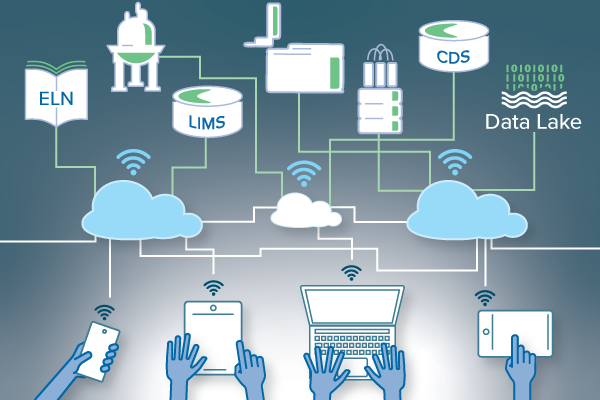April 5, 2023
by Richard Lee, Director, Core Technology and Capabilities, ACD/Labs
The Key to Success and the Biggest Barrier: Data
Data is at the heart of R&D. Scientists rely on it to make decisions. The digital representation of LC/UV/MS, NMR, NIR, and other analytical chemistry techniques help us to understand the structure and composition of materials; the processes by which they are made; or to evaluate the performance of experiments, materials, or processes—today and in future projects. Together, data drives all insights and developments. It flows within, between, and across teams. While being crucial, data management is also one of the hardest challenges to address. If done ineffectively, it creates a barrier to collaboration.

The crux of the analytical and chemical data management challenge comes not only from its heterogeneity (different data types in various formats) but also how and where data is stored. First and foremost, teams are usually in different locations, whether down the hall, road, or in a different country. Collaboration happens at a distance and success hinges on whether everyone involved can share findings and collaborate in real-time with all the context they need.
Reality is, departments, teams, and regions may all manage their data differently. For some, that means storing data in various Microsoft applications, such as PowerPoint or Excel. For others, data may be stored on an individual’s hard drive versus a shared space. This results in unnecessary time spent searching for information and the possibility of duplication of effort. In fact, scientists prefer to re-run the experiments rather than sift through Microsoft locations, various applications, or figure out whose hard drive has the data. The heterogeneity of data and multiple possible storage locations hinder comprehensive, real-time access to data.
But, the right collaborative platform can combine data and project knowledge to streamline work and reduce time to insights.
Closing the Distance with Technology
Regardless of location, time zone, or source, a singular platform for analytical data ensures everyone is on the same page. But for a collaborative tool to be effective, the end-user’s experience must be at the forefront. If it doesn’t connect workflows and adds more complexities, it misses the point. At ACD/Labs, our passion revolves around offering resources that alleviate barriers to collaboration.
Take our Spectrus platform. It’s a software environment that standardizes data across instruments and vendors and allows for singular sharing of that data. Spectrus assembles the data for a full chemical context within a study. Individuals have access to project data when and where they need it, on-demand.

21st Century Expectations—Designing for a Successful User Experience (UX)
Experiences in everyday life impact our expectations. In our labs and offices we want the same ease of access to data that our phones or personal tablets offer for banking, flight bookings, and other needs in our personal lives. Two expectations stand out.
- The Internet and Shift to Browser-Based Applications
The internet age brought on the emergence of our microwave society. We live in a time where we want everything instantaneously (like re-heating your food in a microwave in a few seconds).When the life sciences industry moved to browser-based applications—a trend expedited by the pandemic—the industry became part of this always-on world. Just like consumers, scientists and researchers also expect data immediately.No longer tied to a specific location or PC, scientists simply access information with an internet connection. As newer, more internet-savvy scientists enter the field, the shift to web applications will continue to evolve and will lower the barrier to collaboration through ease of access. - Intuitive User Interfaces (UI)
Similar to immediacy, audiences have grown to expect well-designed user interfaces. They want customization. Specific to life sciences, this means a shift to “made for purpose” interfaces.It’s not technology for technology’s sake. Rather, it’s understanding what users need and offering a suite of options. Perhaps this looks like an application marketplace for the end-user. They can design their own interface and configure the application to suit their specific workflows and scale as needed.
R&D is a team effort. Collaborative platforms encourage teamwork, efficiency, and ultimately, stronger results. Adoption of these platforms hinges on the UX and if it considers user behaviors, expectations, and broader work-life trends. With tools such as these in place, R&D teams can spend more time and brain power solving today’s biggest challenges, and less time trudging through clunky data workflows.


